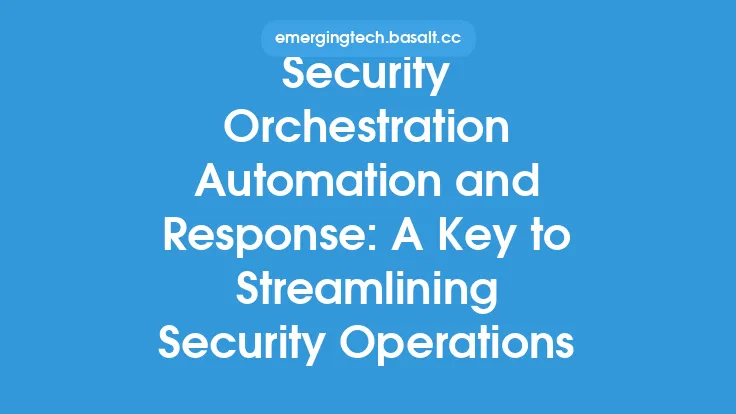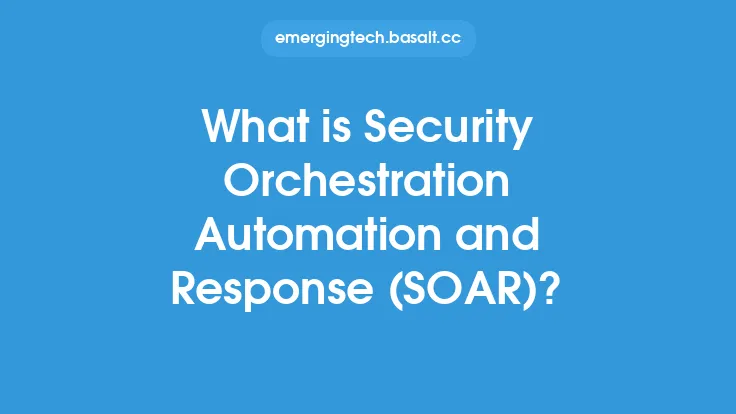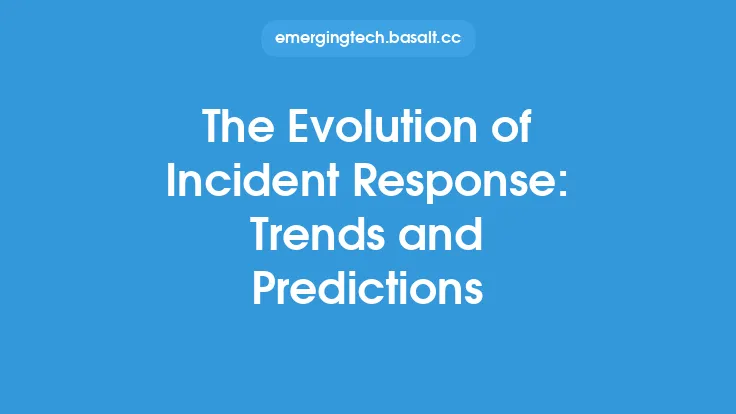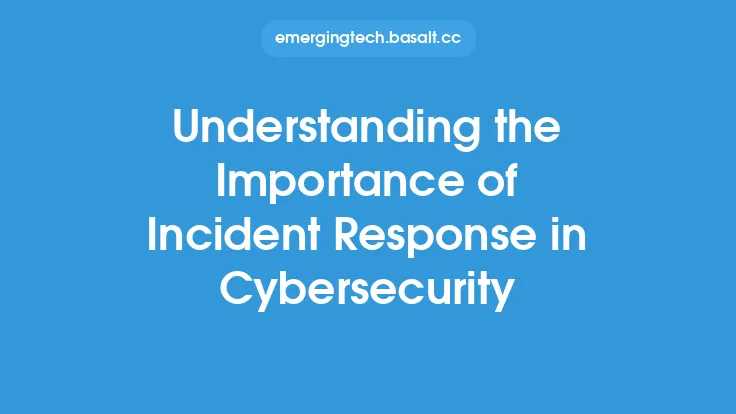The cybersecurity landscape is constantly evolving, with new threats and vulnerabilities emerging every day. As a result, security teams are under increasing pressure to respond quickly and effectively to incidents, while also managing the day-to-day operations of their security infrastructure. This is where Security Orchestration Automation and Response (SOAR) comes in – a solution that enables organizations to streamline their security operations, automate repetitive tasks, and improve their incident response capabilities.
Introduction to Security Orchestration Automation and Response
Security Orchestration Automation and Response (SOAR) is a term used to describe the integration of security orchestration, automation, and response capabilities into a single solution. SOAR solutions are designed to help security teams manage the overwhelming volume of security-related data and alerts, while also providing a framework for automating and orchestrating security workflows. By leveraging SOAR, organizations can improve their security posture, reduce the risk of breaches, and enhance their overall incident response capabilities.
Key Components of SOAR
A typical SOAR solution consists of several key components, including security information and event management (SIEM) systems, threat intelligence platforms, security orchestration tools, and automation platforms. These components work together to provide a comprehensive security operations platform that enables organizations to detect, respond to, and remediate security incidents. The key components of SOAR include:
- Security Orchestration: This involves the integration of multiple security tools and systems into a single platform, enabling security teams to automate and orchestrate security workflows.
- Automation: This involves the use of automation tools to automate repetitive security tasks, such as data collection, analysis, and reporting.
- Response: This involves the use of incident response tools and processes to respond to security incidents, including containment, eradication, recovery, and post-incident activities.
How SOAR Works
SOAR solutions work by integrating with existing security tools and systems, such as SIEM systems, threat intelligence platforms, and security appliances. Once integrated, the SOAR solution can collect and analyze security-related data, identify potential security incidents, and automate the response to those incidents. This can include tasks such as:
- Data collection and analysis: The SOAR solution collects and analyzes security-related data from various sources, including SIEM systems, threat intelligence platforms, and security appliances.
- Incident detection: The SOAR solution uses machine learning and analytics to identify potential security incidents, such as malware outbreaks or unauthorized access attempts.
- Automation: The SOAR solution automates the response to security incidents, including tasks such as containment, eradication, and recovery.
- Orchestration: The SOAR solution orchestrates the security workflow, ensuring that all necessary tasks are completed in a timely and efficient manner.
Benefits of SOAR
The benefits of SOAR are numerous, and include:
- Improved incident response: SOAR solutions enable organizations to respond quickly and effectively to security incidents, reducing the risk of breaches and minimizing downtime.
- Increased efficiency: SOAR solutions automate repetitive security tasks, freeing up security teams to focus on more strategic activities.
- Enhanced security posture: SOAR solutions provide a comprehensive security operations platform, enabling organizations to improve their security posture and reduce the risk of breaches.
- Better decision-making: SOAR solutions provide security teams with real-time visibility into security-related data, enabling them to make better decisions about security operations.
Technical Requirements of SOAR
Implementing a SOAR solution requires a range of technical skills and expertise, including:
- Security orchestration: This involves the integration of multiple security tools and systems into a single platform.
- Automation: This involves the use of automation tools to automate repetitive security tasks.
- Data analysis: This involves the use of machine learning and analytics to analyze security-related data and identify potential security incidents.
- Incident response: This involves the use of incident response tools and processes to respond to security incidents.
- Integration: This involves the integration of the SOAR solution with existing security tools and systems.
Common SOAR Use Cases
SOAR solutions are commonly used in a range of scenarios, including:
- Incident response: SOAR solutions are used to automate and orchestrate the response to security incidents, including tasks such as containment, eradication, and recovery.
- Threat hunting: SOAR solutions are used to automate and orchestrate threat hunting activities, including tasks such as data collection, analysis, and reporting.
- Security operations: SOAR solutions are used to automate and orchestrate security operations, including tasks such as vulnerability management, compliance monitoring, and security analytics.
- Compliance: SOAR solutions are used to automate and orchestrate compliance activities, including tasks such as data collection, analysis, and reporting.
Challenges and Limitations of SOAR
While SOAR solutions offer a range of benefits, there are also several challenges and limitations to consider, including:
- Integration: Integrating a SOAR solution with existing security tools and systems can be complex and time-consuming.
- Automation: Automating repetitive security tasks can be challenging, particularly in complex security environments.
- Data analysis: Analyzing security-related data can be challenging, particularly in large and complex security environments.
- Incident response: Responding to security incidents can be challenging, particularly in complex security environments.
Future of SOAR
The future of SOAR is exciting, with a range of emerging trends and technologies set to shape the security landscape. These include:
- Artificial intelligence: The use of artificial intelligence (AI) and machine learning (ML) to analyze security-related data and identify potential security incidents.
- Cloud security: The use of cloud-based security solutions to provide scalable and flexible security operations.
- Internet of Things (IoT) security: The use of SOAR solutions to secure IoT devices and prevent IoT-based attacks.
- Hybrid security: The use of SOAR solutions to secure hybrid environments, including on-premises and cloud-based security environments.





